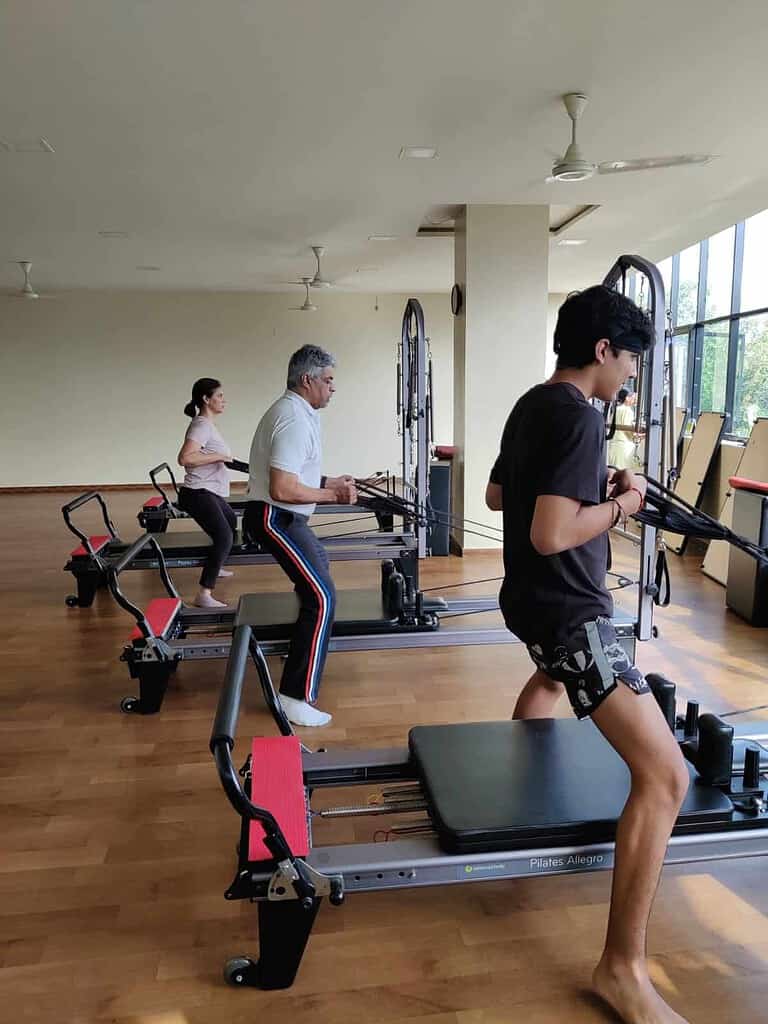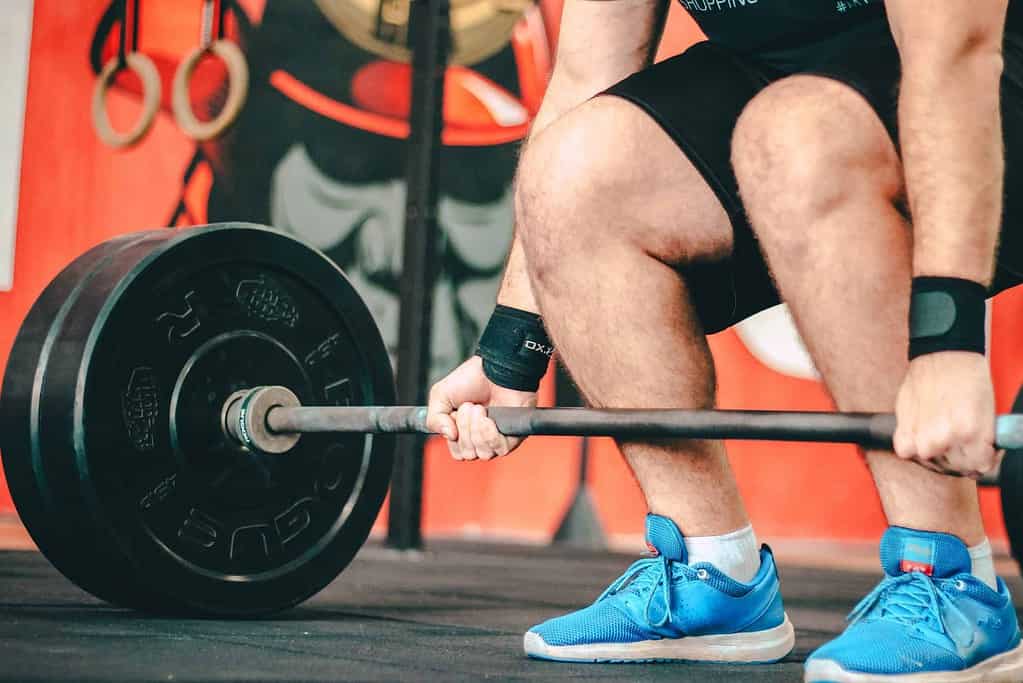How Pilates complements gym workouts
We have seen a lot of people pit one form of exercise against another. But we, at Moushu’s Pilates do not believe in Pilates vs. XYZ. Why choose one form of exercise over another when you can mix it up and get the best of both worlds! In a series of blogs, we will compare Pilates with different forms of exercise and sports to show you how Pilates can complement your practice. In this blog, we discuss the benefits of doing Pilates for gym-goers and weight-lifters.
Hitting the gym
When we refer to the ‘gym’, we are referring to the form of exercise which is traditional weight training or strength training using free weights and weights machines. Most gyms house cardio equipment as well, but that is not what most people refer to as “gymming”.
Without a doubt, weight training is necessary for everyone. It improves bone density, promotes fat-free body mass, increases the strength of muscles, and in general, leads to a better quality of life. Traditional weight training seeks to isolate and work with individual muscles one at a time and this is great for building muscle as you get the most benefit from each lift when a single muscle is isolated. Those who go to the gym regularly and supplement it with an effective diet, tend to get the physique that is considered model-like.
Having said that, gym injuries aren’t uncommon. If the body isn’t trained to brace itself against the forces of the weights, they tend to use momentum or to recruit other muscles to help lift the heavy weights. As a result of this, when they attempt to use the same muscles outside of the gym, they over-extend and end up hurting those smaller muscles, in most cases the lower back.
How Pilates can supplement your gym practice
You might be wondering how Pilates, as an exercise system, can be beneficial to you if you already work out in the gym. The main difference between Pilates and weight training is that Pilates exercises are whole-body movements that require many muscles to work at the same time. Meanwhile, weight training works muscles in isolation.
Your major muscle groups are getting a good workout at the gym and you are seeing muscles grow and form – there is no denying it, but there are some things missing viz. flexibility, faster recovery, more energy, improved balance, etc. Those gaps are filled by Pilates:
1. Core activation:
Lifting heavy requires activation of the core. In Pilates, the first thing you are taught is to stabilise your core muscles to begin any movement. We consciously work the stabiliser muscles while doing resistance training. You become so accustomed to stabilizing yourself during exercise, that this mind-body connect carries forward to your gym workouts and functional movements in the real world. Thus, you avoid dangerously recruiting muscles that aren’t meant for a certain activity.
2. Whole-body movement:
While at the gym, you do legs and back on one day and shoulders and abs on another, Pilates is a more integrated whole-body movement. Along with the large muscle groups which you use in the gym, you can also work smaller muscles that often don’t get enough attention. Pilates is able to ensure that every muscle in the body is worked, strengthened, toned, and shaped. It gives better results in the gym when you lift heavy, as you can do your sets without tiring out quickly and recovering faster as well.
3. Flexibility:
Those who lift extremely heavy tend to struggle with flexibility. As your muscles grow and your workouts intensify, you might find that you become stiff, your range of motion becomes less, and you get a general sense of stiffness in your muscles. This can put your workout on the back foot or delay you from reaching your objectives. Incorporating a routine twice a week that lengthens your muscles can free up a lot of tightness. Pilates aims to create greater flexibility in muscles while strengthening them too. This means that you can lift more and stretch more without fear of injury. As Pilates was first designed as a rehabilitation practice, it is also ideal for ensuring that muscles repair and recover quicker between workouts. If you are injured, specific Pilates exercises can be used to strengthen the injured area and spur on quicker, more reliable recovery.

4. Improves balance:
Pilates has a scientific approach to training the proprioception of the body. Props like the small ball, foam roller, wobble board, and the Pilates equipment like the Reformer are great places to train the balance of the body. This is complementary to your gym routine where you focus more on strength.
5. Softer on joints:
We know that those who go to the gym want to get ripped and get bulked up, but a lot of the weight ends up coming on the joint. Pilates can train you to protect your joints when you lift heavy weights. We start with smaller weights and gradually build up as the posture improves. This understanding can easily transform the way you pick up your weights and release them after your sets are done as that is usually the time when people are most prone to injuries.

6. Eccentric and concentric work:
When doing Pilates exercises against spring resistance, you have to work to bring it back to its original length slowly and carefully – with control. When working with Pilates equipment, like the Reformer, you must always control the movement on the return portion of an exercise. When you train your body to control the movement that extends and contracts the spring, you train your body to have greater balance and control in general. This is different from training with gym equipment, where you’re putting more effort in the beginning of the movement, leading up to a quick release. Controlling both directions of a movement challenges the muscles as they are shortening (when you make the initial push against the spring) and while they are lengthening, which builds long and lean muscles.
7. Unilateral work:
In Pilates, we work unilaterally to balance the body. This makes sure that you are not just firing from your stronger side alone while doing strength training.
8. Targeted abs:
With Pilates, you can develop abs quicker. The springs on Pilates equipment act as abdominal muscles you don’t yet have. As you get stronger, the spring resistance can be lessened so that your abs can slowly do more of the work until you can do the entire movement by yourself. And in general, as someone who goes to the gym regularly, you want extreme strength and minimal fat covering your perfectly developed muscles. The less fat you have, the more definition your muscles have, and this is what causes muscles to “pop” or give you that “ripped” look. That being said, Pilates can help trim the waistline, as well as make abdominal muscles strong and prominent.
9. Breathing:
One of the key elements of Pilates is breathing. Every movement is combined with an inhalation or exhalation. When you train with breathing, you develop better body awareness which improves the firing of the muscles as it is an aerobic activity. In addition, it improves your mind-body connect, concentration, and quality of life, in general.
10. Sustainable progress:
Lastly, as someone who gyms regularly, you build up bulk in your muscles that must be maintained with constant training. The muscles might lose their tone if you stop lifting for some time. The skin expands to hold the bigger mass but sags as the muscles shrink. If you add Pilates to your routine, you will build muscle tone with spring resistance, and although your muscles won’t bulk up, they will become longer and toned without increasing excessively in size. And even if you stop training for a few weeks, your body will maintain tone in your muscles and not go through drastic changes.
Balance is key
In day-to-day movements, we utilize many muscles at once. Think simple movements like climbing the stairs or kneeling to pick up a child. These types of actions create coordination that, as opposed to hardcore gym training, doesn’t use a single muscle at a time. Thus, while working towards greater strength and a hot-bod, it is essential to train for functional movements.
Pilates cannot build muscle bulk, that is for sure. But when added to your gym routine, you can build endurance and flexibility while gaining muscle strength and that ripped look! What’s more? You will avoid injuries, recover faster and achieve quicker results! Now, who doesn’t want that?
If you go to the gym, try 2 days a week of Pilates along with 4 days of gym and 1 day of rest. You will surely see the difference. Contact us to do a trial class.
Read also: How Pilates can help men achieve their ideal body.
Written with Laila Ali
